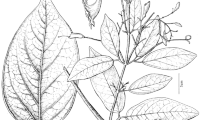Abstract
A range of beetle species are associated with plants and many of them reside primarily in flowers; of these Nitidulidae possess a large share. Beetles which thrive upon angiosperms exhibited a rapid rate of speciation as compared to others with different feeding habits. Hence, beetles and angiosperms have co-evolved and influenced each others’ evolution for better survival. Some flower-visiting beetles have developed special features for floral diet and other purposes like pollination, shelter, reproduction, etc. Likewise, certain flowers also have adapted structurally and physiologically to attract beetles for pollination which include pollen, nectar, floral heat etc. Although beetles are found to be amongst the pioneer flower visitors, they are not as efficient pollinator as bee and butterfly. However, they have been found to be chief pollinators for a few plant families like Magnoliaceae, Annonaceae and Palmae. Several sap beetles have been encountered in floral parts in West Bengal, Assam, Uttar Pradesh, Karnataka and Tripura. Nature of relationships of those beetles with inflorescence and flowers were examined. None of them is yet found to be a true pollinator.

Similar content being viewed by others
References
Carpenter, F.M. 1992. Superclass Hexapoda. In Treatise on invertebrate palaeontology, arthopoda, vol. 4, ed. R.C. Moore, and R.L. Kaesler, 3–4. Boulder & Lawrence: Geological Society of America & University of Kansas.
Crowson, R.A. 1981. The biology of Coleoptera, 802. London: Academic Press.
Dafni, A., P. Bernhardt, A. Shmida, B.Y. Ivri, S. Greenbaum, Ch. O’Tootle, and L. Losito. 1990. Red bowl-shaped flowers: Convergence for beetle pollination in the Mediterranean region. Israel Journal of Botany 39: 81–92.
Farrell, B.D. 1998. “Inordinate fondness” explained: Why are there so many beetles. Science 281: 555–559.
Farrell, B.D. 1999. Flowers and insect evolution. (Response to Danforth & Ascher’s letter). Science 283: 143a.
Gullan, P.J., and P.S. Cranston. 2005. An outline of entomology. Oxford: Blackwell Publishing.
Hutchinson, G.E. 1959. Homage to Santa Rosalia, or why are there so many kinds of animals? American Naturalist 93: 145–159.
Inouye, D.W. 1980. The terminology of floral larceny. Ecology 61: 1251–1253.
Kerner, Anton. 1902. The natural history of plants: Their forms, growth, reproduction, and distribution, vol. 1, 777. Glasgow & Dublin: Blackie & Son Ltd.
Kirejtshuk, A.G. 1983. Ways of formation of anthophily among beetles. Verhandlung X. International Symposium über Societas Internationalis Entomofaunistica Europae Centralis, Budapest, 173–175.
Krakos, Kyra N., Gary M. Booth, John S. Gardner, and Mason G. Neipp. 2011. Nectar for plant defense: The feeding of the non-native Coccinellid beetle Curinus coeruleus, on extra-floral nectaries of Hawaiian native Hibiscus Brackenridgei. International Journal of Insect Science 3: 11–21.
Lawrence, J.F. 1982. Coleoptera. In Synopsis and classifications of living organisms, ed. S.P. Parker, 482–553. New York: McGraw-Hill.
Lovell, John H. 1915. The origin of anthophily among the coleoptera. Psyche 22 (3): 67–84.
Lovell, John H. 1917. The evolution of flowers. The Scientific Monthly 4 (2): 110–119.
Roy, S., S. Bhaumik, I. Imam, T. Chatterjee, K. Roy, and B. Mitra. 2016. A preliminary study on the succession of insect visitors and their symbiotic interaction for effective pollination in Brassica juncea (L.) of Southern West Bengal. International. Journal of Advanced Research 4 (8): 1762–1768.
Solomon, Raju A.J., and K.Henry Jonathan. 2010. Anemophily, accidental cantharophily, seed dispersal and seedling ecology of Cycas sphaerica Roxb. (Cycadaceae), a data-deficient red-listed species of northern Eastern Ghats. Current Science 99 (8): 1105–1111.
Seymour, R.S., and P.G.D. Matthews. 2006. The role of thermogenesis in the pollination biology of the amazon waterlily Victoria amazonica. Annals of Botany 98: 1129–1135.
Seymour, R.S., and P. Scultz-Motel. 1997. Heat producing flowers. Endeavour 21 (3): 125–129.
US Forest Service (USDA). 2016. Beetle pollination. http://www.fs.fed.us/wildflowers/pollinators/animals/beetles.shtml. Accessed 19 Sept 2016.
Winfree, R., I. Bartomeus, and D.P. Cariveau. 2011. Native pollinators in anthropogenic habitats. Annual Review of Ecology Evolution and Systematics 42: 1–22.
Acknowledgements
We are grateful to Dr. Kailash Chandra, Director, Zoological Survey of India (ZSI) for providing necessary facilities to carry out the work. Dr. M.E. Hassan, Scientist, ZSI, Dr. O.K. Rema Devi, Scientist, IWST, Bengaluru, Dr. Reddy, Scientist, IIHR, Bengaluru and Professor C. A. Viraktamath, Emeritus Professor, GKVK, Bengaluru extended support and co-operation in the research work. We remain thankful to the anonymous reviewers of the paper for constructive criticisms and suggestions for improvement of the text.
Author information
Authors and Affiliations
Corresponding author
Ethics declarations
Conflict of interest
The authors declare that there is no conflict of interest.
Rights and permissions
About this article
Cite this article
Dasgupta, J., Pal, T.K. & Hegde, V.D. An Appraisal of Range and Evolutionary Significance of Flower-Beetle Association, with Special Reference to Sap Beetles (Coleoptera: Nitidulidae). Proc Zool Soc 71, 170–177 (2018). https://doi.org/10.1007/s12595-017-0213-3
Received:
Revised:
Accepted:
Published:
Issue Date:
DOI: https://doi.org/10.1007/s12595-017-0213-3




